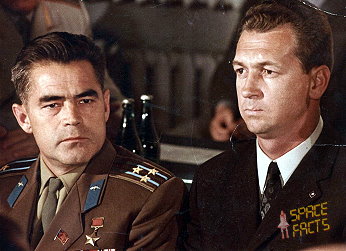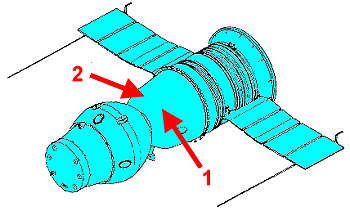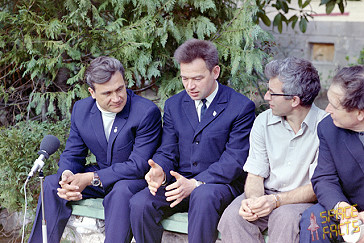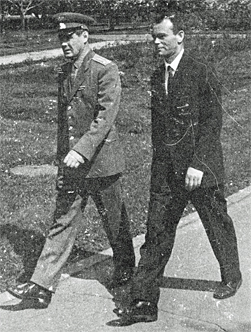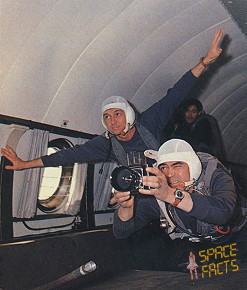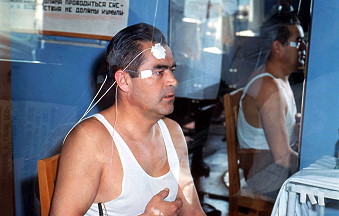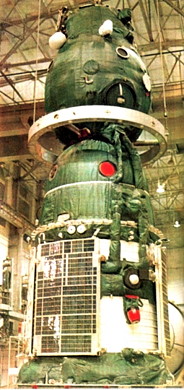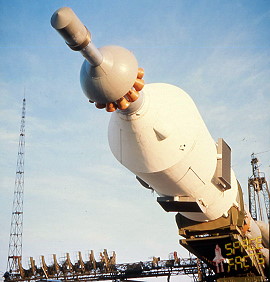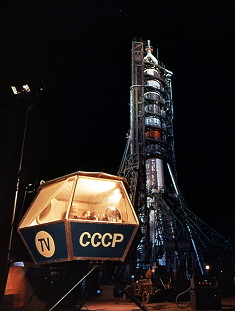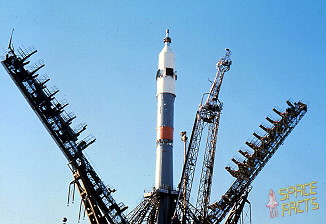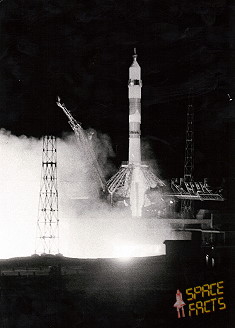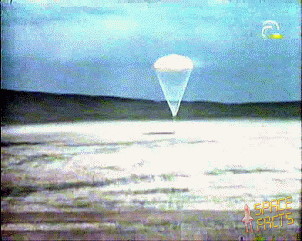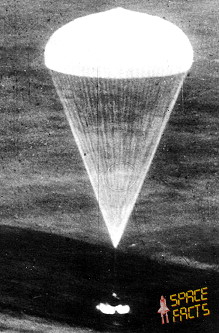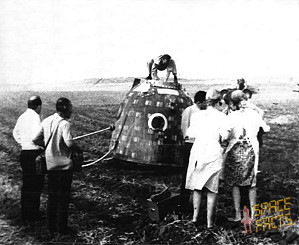Launch from the Baikonur Cosmodrome and
landing 75 km west of Karaganda.
Soyuz 9 performed the
first night launch in the era
of human spaceflights. The crew performed photographical and visual Earth
observation, several astrophysical, physiological experiments and technical
studies. One solar panel was not working well after a few days, but that was
not a big problem. The capsule was set into a slow sun-oriented rotation.
Valentina
Tereshkova and her daughter communicated via radio and
television with husband and father Andriyan
Nikolayev. On Flight day 10 the crew was off duty. On this
day they played chess via radio with cosmonaut Viktor
Gorbatko on Earth. Since flight day 12, the crew became more
and more problems to do concentrate work, they became tired and made some small
mistakes.
The
Soyuz spacecraft is composed of three elements
attached end-to-end - the Orbital Module, the Descent Module and the
Instrumentation/Propulsion Module. The crew occupied the central element, the
Descent Module. The other two modules are jettisoned prior to re-entry. They
burn up in the atmosphere, so only the Descent Module returned to Earth.
The
deorbit burn lasted 188 seconds. Having shed two-thirds of its mass, the
Soyuz reached Entry Interface - a point 400,000 feet
(121.9 kilometers) above the Earth, where friction due to the thickening
atmosphere began to heat its outer surfaces. With only 23 minutes left before
it lands on the grassy plains of central Asia, attention in the module turned
to slowing its rate of descent.
Eight minutes later, the spacecraft was
streaking through the sky at a rate of 755 feet (230 meters) per second. Before
it touched down, its speed slowed to only 5 feet (1.5 meter) per second, and it
lands at an even lower speed than that. Several onboard features ensure that
the vehicle and crew land safely and in relative comfort.
Four parachutes,
deployed 15 minutes before landing, dramatically slowed the vehicle's rate of
descent. Two pilot parachutes were the first to be released, and a drogue chute
attached to the second one followed immediately after. The drogue, measuring 24
square meters (258 square feet) in area, slowed the rate of descent from 755
feet (230 meters) per second to 262 feet (80 meters) per second.
The main
parachute was the last to emerge. It is the largest chute, with a surface area
of 10,764 square feet (1,000 square meters). Its harnesses shifted the
vehicle's attitude to a 30-degree angle relative to the ground, dissipating
heat, and then shifted it again to a straight vertical descent prior to
landing.
The main chute slowed the
Soyuz to a descent rate of only 24 feet (7.3 meters)
per second, which is still too fast for a comfortable landing. One second
before touchdown, two sets of three small engines on the bottom of the vehicle
fired, slowing the vehicle to soften the landing.
The landing proceeded
normally, but both cosmonauts had big problems, to stand and to walk after
landing. The
cosmonauts' condition after landing was awful. It was
painful and difficult for them to get up. They falled down in their first
tortured attempts at walking. They had to be dragged along by the arms and they
looked very ill. There was no knowledge about the effects of zero-G for humans
and so there were no plans and equipment (for example chairs) for the ill crew,
which was brought then to hospital. But all in all, a new spaceflight duration
record was performed. But it was the final record performed by a solo flying
spaceship. Following records were set by spaceships, which travelled to orbital
stations.
![]()

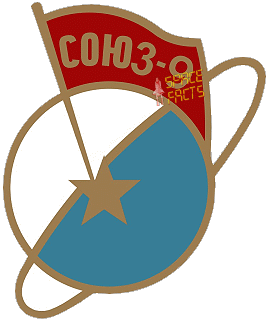
![]()
